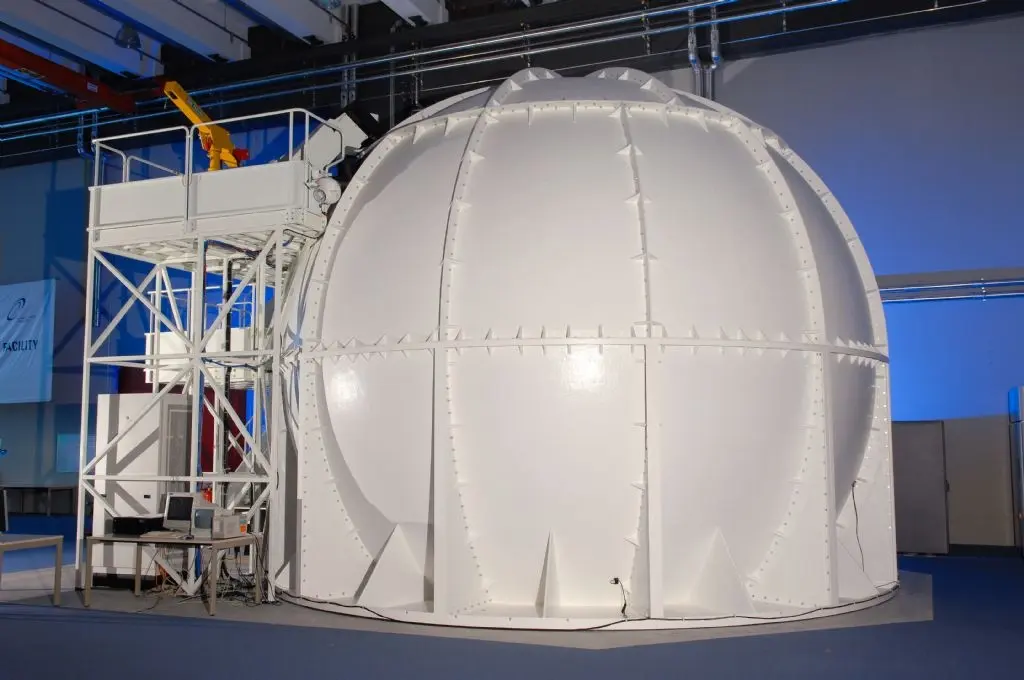



CAE has experience in building, designing and integrating every type of simulation display system on the market. This expertise in high-resolution display systems continues to push technological innovation to the limit. By combining commercial-off-the-shelf (COTS) equipment with years of experience, CAE’s display systems achieve unparalleled levels of clarity and brightness.
CAE integrates display systems ranging from simple direct view displays optimized for basic training devices through to wide angle, wrap-around collimated displays and full field-of-view (FOV) dome displays for visualization that immerses the trainee in the simulated environment. The basic characteristics of the display - resolution, field-of-view, brightness and contrast - are optimized to meet the most rigorous training scenarios. Landing and takeoff for pilot training, complex combat scenarios, air-to-air, air-to-ground and ground-to-ground engagements, air-to-air refuelling, hovering and armoured vehicle operations all form a part of CAE's extensive experience in meeting simulation-based training requirements.
CAE is one of the largest producers of collimated displays in the world. Our continuous collimated displays have been a standard CAE offering for many years, both as part of a complete visual system or on a stand-alone basis. Collimation is primarily used for air applications and designed for cross-cockpit viewing, allowing a pilot and co-pilot to achieve maximum training benefit simultaneously. Collimated displays provide continuous, high-brightness, high-resolution imagery to the flight crew over the required field-of-view (FOV) making them ideal for training tanker and transport aircrews.
Extended field-of-view collimated displays: Extended vertical field-of-view (FOV) collimated mirror displays are also available, providing enhanced visual cues in military applications such as helicopters and fixed-wing transport aircraft performing air-to-air refueling.
Chin and side window displays: Certain helicopter training applications require a greater field-of-view than what can be obtained with a standard collimated mirror offering. Chin and side windows provide an affordable alternative that allows for invaluable visual cues. These window displays can support a collimated or a non-collimated image and the devices ensure continuity by matching the appearance of the image on the main display.
CAE's dome displays are ideal for helicopter, tactical and full mission training scenarios which often dictate the need for a larger field-of-view than a collimated display can provide. CAE supplies both fixed and motion-based compatible dome display systems for a wide range of complex applications. Partial and full field-of-view Mosaic dome designs are available. Using an array of projectors, located at fixed positions and attitudes within the dome, optimal brightness and resolution is obtained for any field-of-view coverage. Demanding training scenarios can be executed with high levels of realism.
The Rear Projection Mosaic (RPM) display is ideal for fast-jet tactical training requirements. It ensures the efficient use of system resources by concentrating very high-resolution imagery at the front and sides of the cockpit, where the pilot's attention is concentrated. Wide fields of view, high-brightness and high-resolution of images allow for challenging and ultra realistic air combat manoeuvring and tactical training exercises. CAE's RPM display offers horizontal fields of view up to 360-degrees, allowing for full immersion of the pilot. Head-up display (HUD) options are also available, ensuring a fully correlated tactical environment.
CAE offers the option of either simulated or stimulated night vision goggles (NVGs). NVG training is an increasingly critical skill in simulation-based training. While the approach of stimulating standard-issue goggles is sufficient for some applications, other uses require accurate portrayal of NVG effects that cannot be produced in a standard simulator display. CAE offers simulated NVGs that include miniature display devices driven directly by the image generator. The display devices are mounted within an actual NVG package to closely replicate the appearance of the aircraft units. They make use of CAE's patented head lag compensation algorithm to provide a stable image to the trainee.